#D&D campaign: Heartland
Text
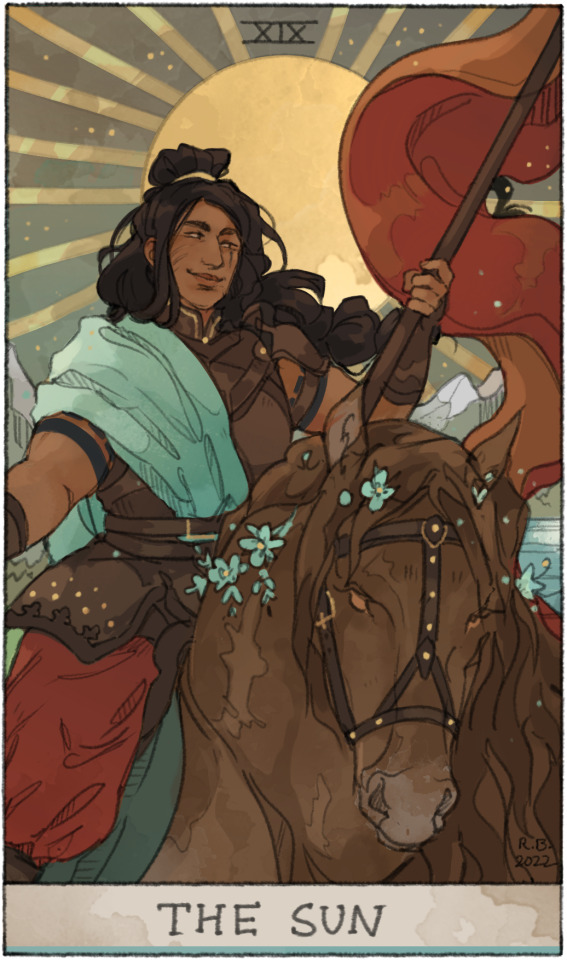
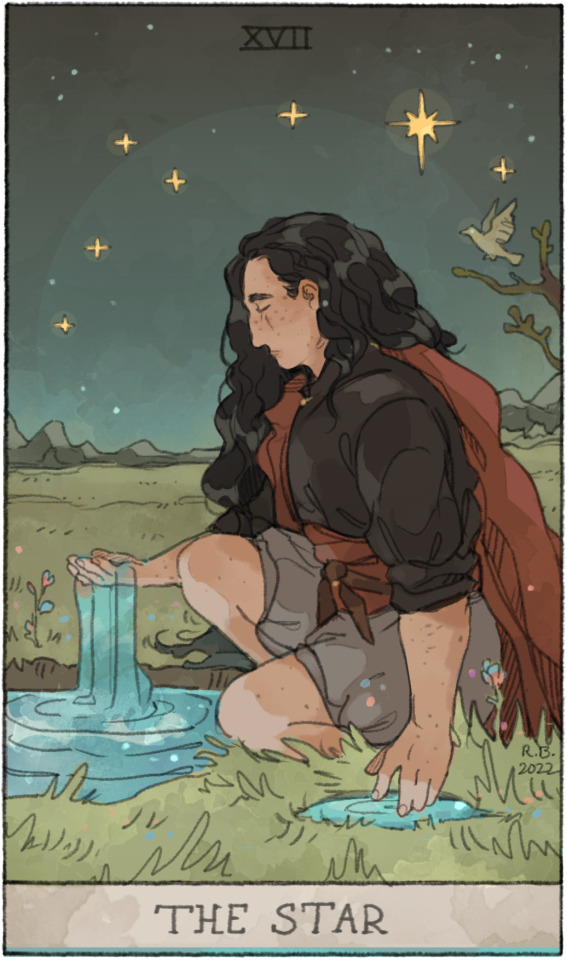
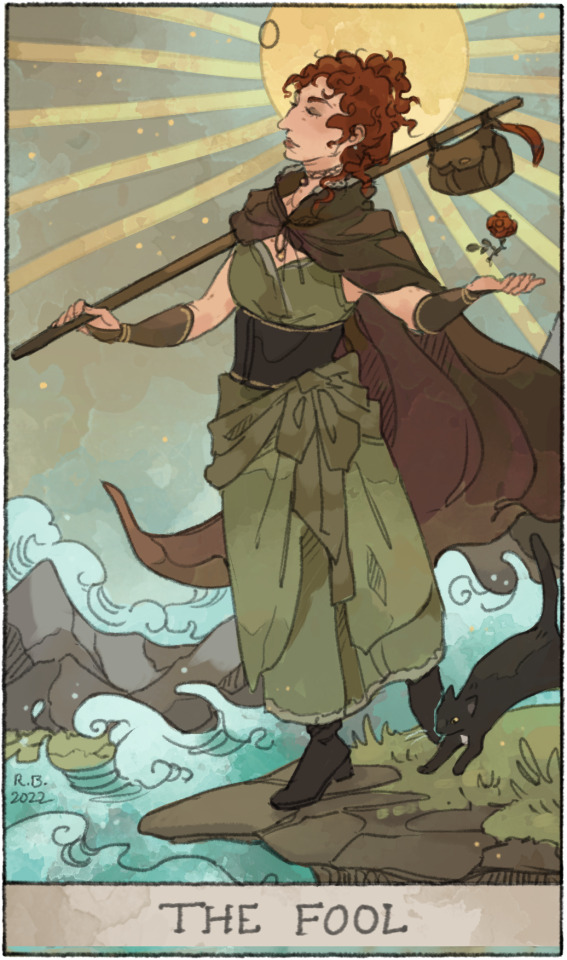


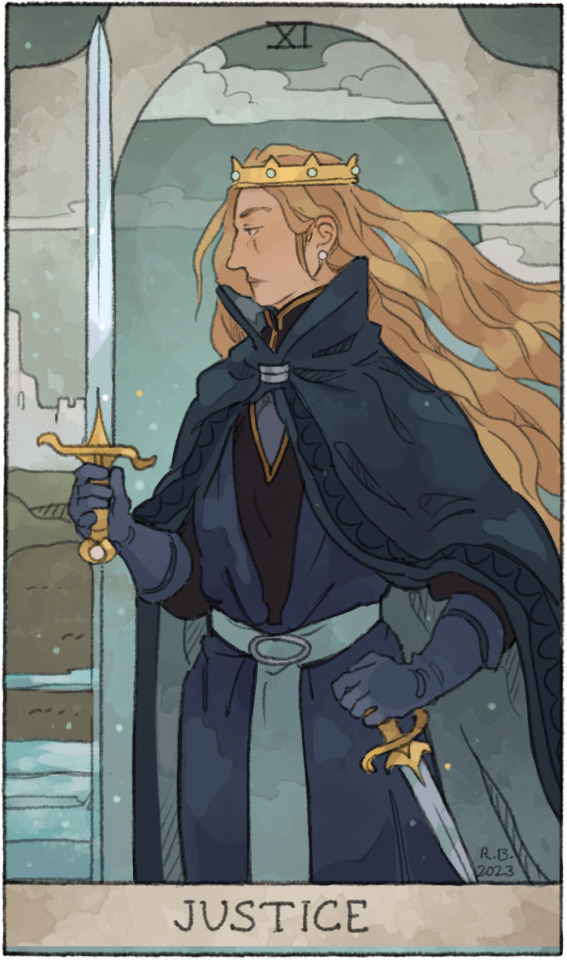
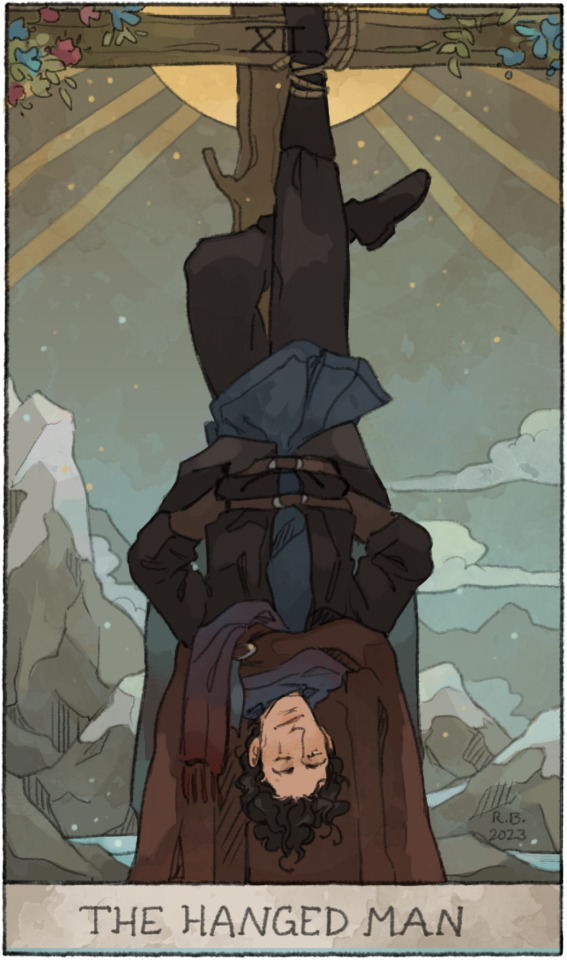
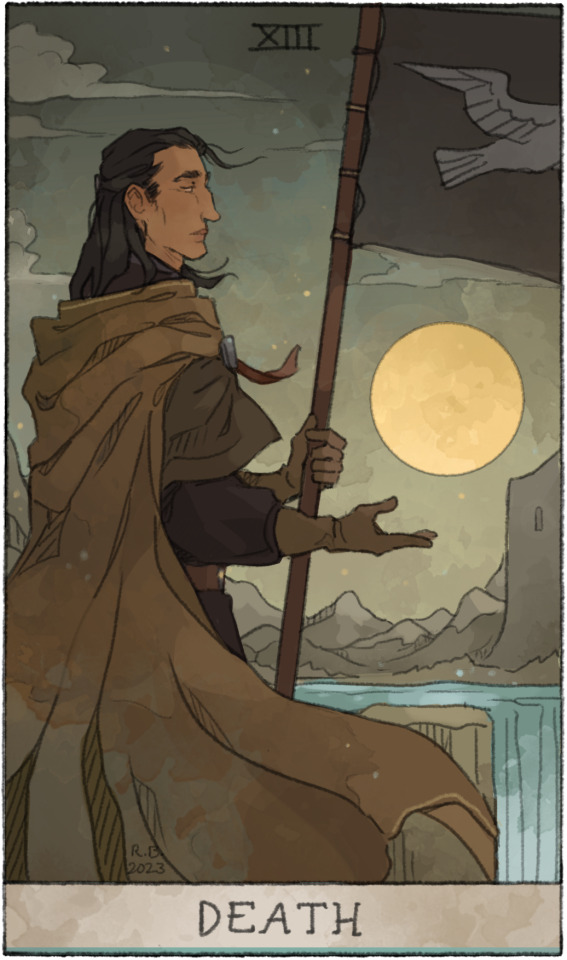
all tarots i've done of my homebrew d&d campaign Heartland (so far & for now)! featuring the player characters Vernonia and Rhiam + current major companion npcs
#d&d#dnd#d&d campaign: heartland#oc: vernonia @iijadraws#oc: rhiam @artharakka#oc: althea#oc: cian#oc: trindel#oc: lorelei#oc: maerd#oc: athe
453 notes
·
View notes
Photo
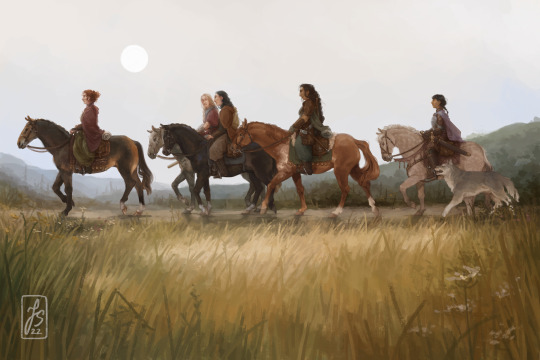
Heartland Fellowship
The first part of the fellowship's journey is over and they have reached the first mountain range in our homebrew D&D campaign. From the left to right, here ride Althea the unofficial leader and medic, Cian, Rhiam, Vernonia the other cursed protagonist besides Rhiam, and their bodyguard Trindel with her wolf Chime.
#AND TONIGHT we shall continue after over a month's break#👀#D&D#dnd#D&D campaign: Heartland#Heartland campaign#Althea#Cian#Rhiam#Vernonia#Trindel#Chime#ohoohohoho I'm so excited
281 notes
·
View notes
Text
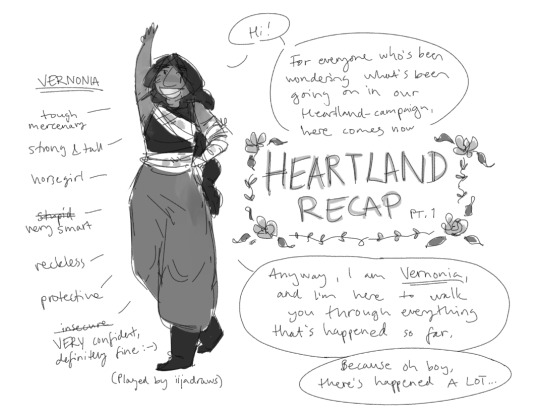

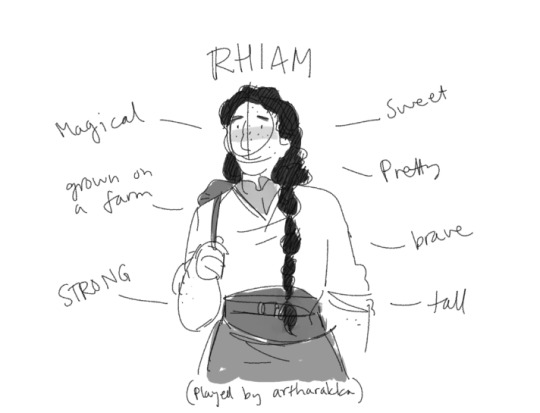




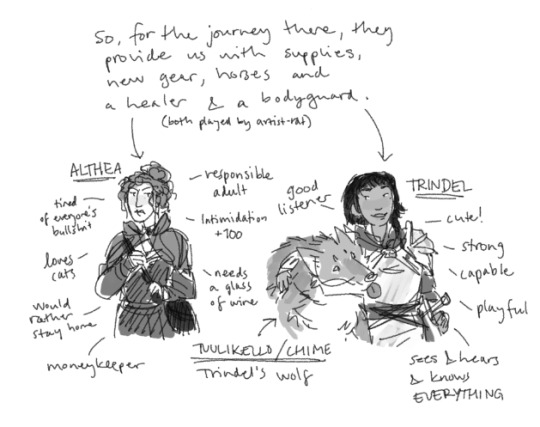
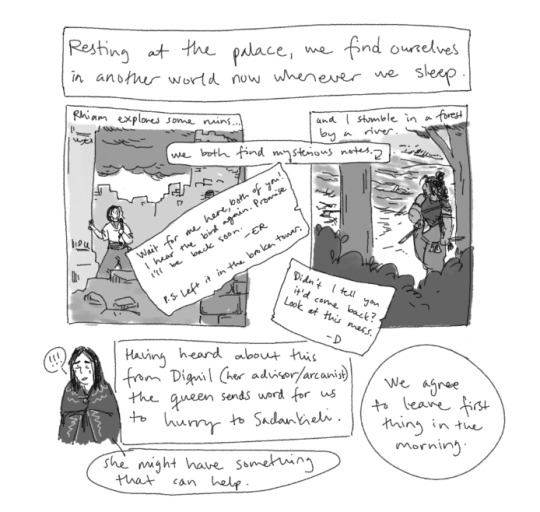
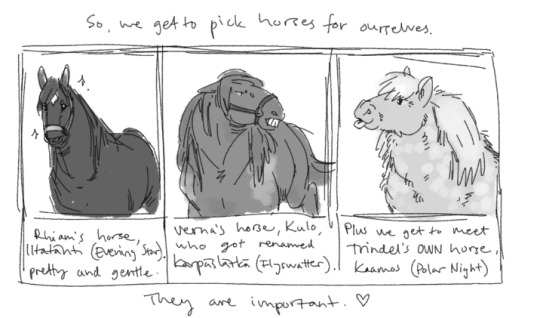
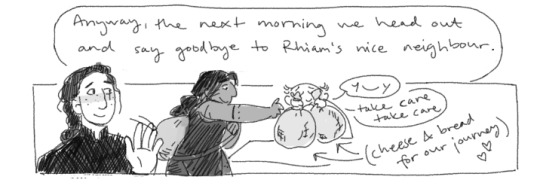



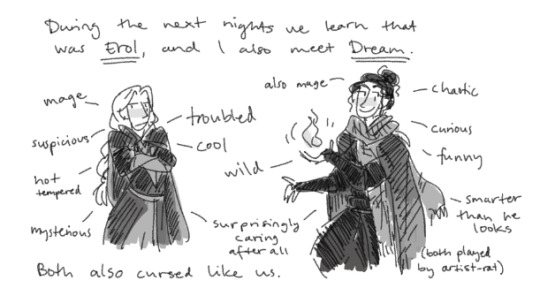
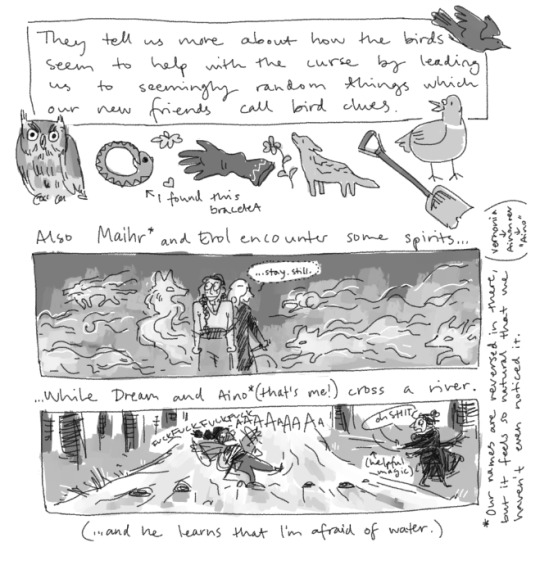

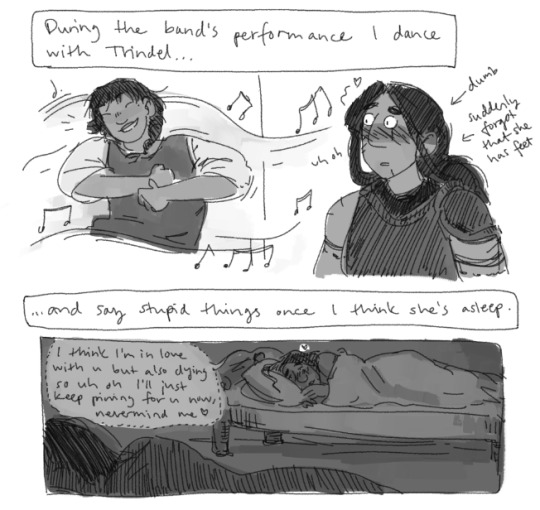


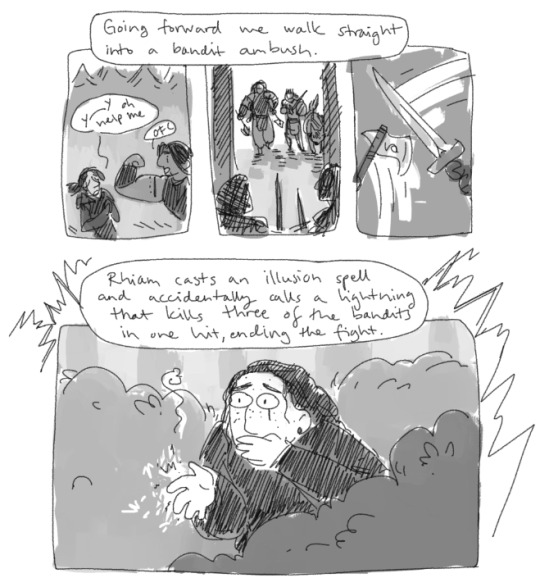

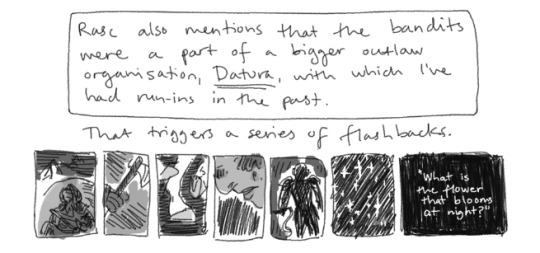

So, yeah!
We're much further in the campaign at the moment, but this is where the first "chapter" of our adventure ended. The second chapter's recap will be up as soon as I get it done!! We've now just started playing the third chapter and oh boy it's so good already ,_____,
Anyway a HUGE shout-out to @artist-rat for nourishing us (me and @artharakka) by creating & dming this campaign for us!! <3 I'm living and can't wait to continue again!!!! ;w; <3
Also another HUGE shout-out to both of you for creating so much good art for nourishment in between the sessions ;--;; <3 Here are some pieces for y'all to check out: [x] [x] [x] [x] [x] [x] (There's more out there, just check out their Heartland tags if you want to see more!)
The story & the world are for a big part based on the first fantasy world we made together with Rat in like 2010, but they've now revised it and made a lot of amazing changes to it so it's all new to me now too, with still the nostalgy for our old characters and getting to know them all anew <3
#heartland recap#d&d heartland#dnd#campaign: heartland#aaaaaaaaaaaa so yea these are the blorbos that inhabit my heart and mind now#i love them all so much#and the whole story oh my gosh#i am GLAD this is a LONG campaign bc as much as i want to see and experience everything i also don't want it to ever end dhfdhfdhdgdhf
27 notes
·
View notes
Text
Forgotten [...] is the crystallization during [the early 20th century] of Zionist thinking vis-a-vis the Palestinians, particularly in the person of the paramount leader, David Ben-Gurion [...]. [A]s early as 1936, Ben-Gurion had decided that the only relationship possible with the Palestinians was a "military" one, since they would not accept a Jewish majority nor unrestricted Jewish immigration—this at a time when the Jews constituted not much more than a quarter of the population. [...] Ben-Gurion [...] considered "a Jewish state in part of Palestine as a stage in the longer process towards a Jewish state in all of Palestine." [...] Lecturing to Mapai activists on 29 October 1937, Ben-Gurion explained that the realization of the Jewish state would come in two stages: the first, "the period of building and laying foundations," would last ten to fifteen years and would be but the prelude to the second stage, "the period of expansion."
[I]n the summer of 1937, ten years before the UN partition resolution, Ben-Gurion ordered the Haganah commander of Tel Aviv, Elimelech Slikowitz ("Avnir"), to draw up a plan for the military takeover of the entire country in anticipation of Britain's withdrawal from Palestine expected in the wake of of the Peel Report. [...] Equally illuminating for this period is the persistent preoccupation of the top echelons of Zionist leadership with the modalities of the "transfer" (euphemism for ethnic cleansing of the Palestinian population from any future Jewish state).
As for the immediate antecedents of the partition resolution, they, too, are forgotten. No correlation is attempted between the partition plan and the [...] ruthless campaign of terror against the British (erstwhile architects of the Jewish National Home) by both the Haganah and the so-called "dissident" Irgun (IZL) and Stern (Lehi) organizations carried out between 1945 and 1947. Lehi, of course, had started earlier and had established links with Nazi Germany as of 1940 on the grounds that Britain was the greater enemy, whereas the Irgun (led by Menachem Begin, recently arrived in Palestine from Poland) unleashed operations against the British in Palestine even as British forces under General Montgomery were probing the Western defenses of the Nazi heartland in Central Europe. To be sure, the Haganah under Ben-Gurion tried selectively to keep its distance from the "dissidents," but this did not inhibit it from carefully orchestrated joint operations with them against British "targets" in Palestine in 1946. It was during this period that an innovative array of tactics was first introduced into the Middle East by the Zionist forces, including letter bombs, parcel bombs, vehicular bombs [...], the whipping and lynching of British soldier hostages, booby-trapping their corpses, and electrically detonated mines against civilian targets.
Thanks to these tactics, which culminated in the attack on the Mandatory headquarters at the King David Hotel in Jerusalem on 22 July 1946, in which 41 Arabs, 17 Jews, and 28 Englishmen were blown to smithereens, an all-pervasive atmosphere of terror seized the Palestinian civilian population—a presumably not unintended effect. It was this same atmosphere that propelled the British government, with its garrison of 100,000 crack troops [...] to call it quits, particularly as the other arm of the Zionist grand strategy constituted continuous, cumulative pressure via the new American president, Harry Truman, who had succeeded Franklin D. Roosevelt in April 1945.
The Jewish campaign against the British did not mean that Ben-Gurion considered his relationship with the British to be a "military" one or that he sought an all-out confrontation with them. Quite the contrary, we are assured by Teveth that he saw the relationship as an exclusively "political" one. In other words, all Ben-Gurion wanted from Britain at this stage was to clear out of the way so that he could pursue his "military" relationship with the Palestinians and the Arab countries. And pursue it he did [...] in a massive program of arms acquisition and military buildup [...].
– 1997. Walid Khalidi, “Revisiting the UNGA Partition Resolution,” Journal of Palestine Studies 27.1, pp. 5-21.
25 notes
·
View notes
Text
Season 17 Spoilers Masterlist (episode by episode)
October 15, 2023 Pre-production started April 18 - May 5, 2023
Shot between May 8, 2023 - August 23, 2023 / May 8, 2023 - August 29, 2023 (delayed 4 days by the wildfires)
Season 17 premieres October 1, 2023
OBVIOUSLY THERE ARE SPOILERS UNDER THE CUT, SO YOU HAVE BEEN WARNED! I will update this post with all the new info we get.
In Season 17, Amy (Amber Marshall) and the rest of the Heartland family know better than most that while dreams can sometimes come true, more often life takes us in unexpected directions. The new season is all about embracing the unexpected. It’s about new experiences and taking the path less traveled. In Season 17 the Bartlett-Fleming family will find themselves excited for the future and ready to embrace new adventures, challenges, and relationships. But no matter how much things may change, Amy, Lou (Michelle Morgan), Jack (Shaun Johnston), and Tim (Chris Potter) will continue to fight for what they believe in while staying rooted in the land that has been in the Bartlett-Fleming family for generations.
PROMO SHOTS | CHARACTER BIOS | SEASON 17 TAG | EPISODE GUIDE | TRAILER
(under construction as in “I accidentally deleted everything... and we’ll see if I can get it all back”)
17x01 - The Path Less Traveled
Amy is surprised when a very pregnant Mallory shows up at the ranch with a wild horse. Jack and Tim face new competition, and Lou grapples with a familiar opponent in her campaign to be re-elected.
Written by: Mark Haroun
Directed by: Dean Bennett
Filmed between: May 8 - June 1, 2023 (Block 1) [May 8 - May 26, 2023]
Aired: October 1, 2023
Music:
Extras:
Preview | First minutes | 17x01 tag | Screencaps
* * * *
17x02 - Taking the Reins
Amy and Jack retrain Edwin’s horse for carriage racing, bringing Amy and Edwin closer. Logan takes his first client horse. Election night arrives for Lou, just as the family faces a difficult loss.
Written by: Ken Craw
Directed by: Ken Filewych
Filmed between: May 8 - June 1, 2023 (Block 1) [May 8 - May 26, 2023]
Aired: October 8, 2023
Music:
Extras:
Preview | First minutes | 17x02 tag | Screencaps
* * * *
17x03 - The Heart Wants
Amy helps Caleb with his son’s pony. Lou and Jessica start a new venture, while Katie tries a risky new hobby. Logan takes a big step in his relationship with Miley, but then disaster strikes.
Written by: Caitlin D. Fryers
Directed by: Chris Potter
Filmed between: June 2 - June 21, 2023 (Block 2) [May 29 - June 15, 2023]
Aired: October 15, 2023
Music:
Extras:
Preview | First minutes | 17x03 tag | Screencaps
* * * *
17x04 - A Piece Apart
Amy must deal with Lyndy’s sudden fear of horses. Logan blames himself for Miley’s accident. Tim enlists the family to make Shane’s return to Heartland perfect, while Katie struggles with a friendship.
Written by: Alexandra Clarke
Directed by: Chris Potter
Filmed between: June 2 - June 21, 2023 (Block 2) [May 29 - June 15, 2023]
Aired: October 22, 2023
Music:
Extras:
Preview | First minutes | 17x04 tag | Screencaps
* * * *
17x05 - How to Say Goodbye
Amy and Jack train Blue for a competition. Lisa deals with a difficult loss. Lou lets Jessica down in their partnership for the gallery. Katie secretly buys a used dirt bike.
Written by: Heather Conkie
Directed by: Michelle Morgan
Filmed between: June 22 - July 19, 2023 (Block 3) [June 16 - July 13, 2023] // Hiatus: June 30 - July 9, 2023
Aired: October 29, 2023
Music:
Extras:
Preview | First minutes | 17x05 tag | Screencaps
* * * *
17x06 - Heat of the Moment
At the competition, Amy has a run in with an old friend that leads to heartache. Jack and Lisa prove they can be adventurous. Katie stands up for herself when Ellie and Brandon push her too far.
Written by: Ken Craw
Directed by: Michelle Morgan
Filmed between: June 22 - July 19, 2023 (Block 3) [June 16 - July 13, 2023] // Hiatus: June 30 - July 9, 2023
Aired: November 5, 2023
Music:
Extras:
Preview | First minutes | 17x06 tag | Screencaps
* * * *
17x07 - Unknown Caller
Lou’s forced to face the reason for her insomnia. Amy works with a new client who has a surprising connection to Katie. Jack wins over a prickly dude ranch guest.
Written by: Caitlin D. Fryers
Directed by: Kristin Lehman
Filmed between: July 20 - August 8, 2023 (Block 4) [July 14 - August 2, 2023]
Aired: November 12, 2023
Music:
Extras:
Preview | First minutes | 17x07 tag | Screencaps
* * * *
17x08 - Harmony
Amy helps a vaulting team ahead of a big competition. Caleb struggles with a tough decision about Carson. Logan realizes where his future lies. Lou and Jessica face a stressful gallery opening.
Written by: Mark Haroun and Adam Hussein
Directed by: Kristin Lehman
Filmed between: July 20 - August 8, 2023 (Block 4) [July 14 - August 2, 2023]
Aired: November 19, 2023
Music:
Extras:
Preview | First minutes | 17x08 tag | Screencaps
* * * *
17x09 - Fear is a Liar
Amy and Nathan retrain his horse. Tim navigates new family dynamics when Miranda shows up early to help with Shane and Chloe’s wedding. Jessica has to heal a rift with Jack.
Written by: Ken Craw
Directed by: Madison Thomas
Filmed between: August 9 - August 29, 2023 (Block 5) [August 3 - August 23, 2023]
Aired: November 26, 2023
Music:
Extras:
Preview | First minutes | 17x09 tag | Screencaps
* * * *
17x10 - Just the Beginning
Written by: Mark Haroun
Directed by: Dean Bennett
Filmed between: August 9 - August 29, 2023 (Block 5) [August 3 - August 23, 2023]
Aired: December 3, 2023
Music:
Extras:
Preview | First minutes | 17x10 tag | Screencaps
48 notes
·
View notes
Text
vague st au things per plotting on discord
lea, surname to be decided, runs the local punk/weird shop. a proper 80s goth in a sleepy conservative community in america’s heartland. learned to be polite as a clapback really early into her american tenure. sells dnd and dnd accessories.
scandinavian by birth, moved away from her admittedly messed up extended family and road around america for a bit before the gas ran out in... hawkins. has been the town weirdo ever since. she is but a humble small business owner no different from the rest, why must t*d wheel*r mock her lifestyle and wares :’(
expanded her business out of her brick and mortar location and into the mall in s3 for convenience/wider appeal to surrounding communities. it got knocked the fuck down before the mall even collapsed, as an extra special fuck you to lea. went back to the building she had used before in s4.
per discord, once had a heated argument with forever dm eddie over her yearly halloween campaign. her shop, her product, her ravenloft one-shot, siddown, eddie, you’re a player now. runs the game to keep the weird kids off the street on halloween/give them an alibi for if anyone wants to claim they were out being heathens. it’s fun seeing what they come up with every year to take strahd down.
small children say, are you a witch? with awe. and she says, not while on the clock.
only adult questioning why the villains are all named after creatures from the monster manual. h. hello???
good with kids and teens in general. treats all customers equally, with respect and an attentive ear to their needs. outside of work, just treats the youths around town like she would want to be treated. this has endeared her to tiny children and made her resident ‘cool adult’ to several middle and high schoolers.
loves moms :) loves moms that take an interest in their childrens hobbies :) special good mom discount for joyce and karen when they used to come in with their boys :) m*ke is none the wiser, w*ll can’t believe the only other gay person he’s ever met is trying to get with his mom.
pretty sure s4 is a turning point of ‘not her kids you conservative shitheads.’ assuming she was not involved in prior shenanigans, s4 might be when she gets involved in the sense of telling jason to sit and spin and then needing three prior seasons of psychic monster bullshit explained to her, but slowly.
yes i am still trying to fit her into larger spookier goings on, because it’s hel, she is by design forced to have her finger on the pulse of weird spooky shit.
4 notes
·
View notes
Text
Kentucky Gov. Andy Beshear tells Jen Psaki that trans kids “children of God”
Newly re-elected Kentucky Gov. Andy Beshear (D) recently explained why Republican ads decrying his belief in trans rights was a losing strategy.
Speaking to MSNBC correspondent Jen Psaki, Beshear first emphasized his passion for protecting trans kids.
Related:
Democrats introduce resolution to recognize Trans Day of Remembrance
“I will never waiver in the effort to ensure that all trans individuals can live without the constant fear of violence and hate.”
“All children are children of God, that’s what my faith teaches me, and I was going to stand up especially for the most marginalized children who didn’t deserve either a state legislature or an entire campaign and all these super PACS picking on them.”
Get the Daily Brief
The news you care about, reported on by the people who care about you:
Subscribe to our Newsletter
In March, Beshear vetoed a sweeping anti-trans bill that included bans on gender-affirming surgeries, puberty blockers, and hormone therapy for minors, as well as a mandate that doctors stop treating young patients who are currently receiving gender-affirming care.
It also banned Kentucky teachers from using pronouns that “do not conform to a student’s biological sex as indicated on the student’s original, unedited birth certificate,” bans instruction on sexuality in grades K through six, and bans discussion of gender identity and sexual orientation at all grade levels.
Kentucky’s Republican-dominated legislature voted to override Beshear’s veto.
When it came time for the gubernatorial election, an outside organization spent millions of dollars on ads attacking transgender people to support GOP candidate and state Attorney General Daniel Cameron.
One of the ads funded by the American Principles Project PAC (APP-PAC) said that Beshear would send the FBI to take trans kids away from their parents if their parents didn’t accept their identities, which was not a part of Beshear’s platform.
Another ad showed a drag queen and accused Beshear of pushing “child sex changes with permanent consequences.” The ad was removed from YouTube under the platform’s hate speech policy.
In several other ads featuring former University of Kentucky swimmer and anti-trans activist Riley Gaines, APP-PAC attacked Beshear for vetoing a bill to ban trans kids from participating in school sports. The Republican legislature ultimately overturned his veto.
Speaking to Psaki, Beshear explained why he believes the Republicans conducted a losing campaign.
“The way these Super PACS and my opponent went about their campaign was just mean, and it was gross, and it was cruel,” he said. “And people don’t like that. That is not who we are, and this oughta be a message that you can’t scapegoat people just to get folks angry, and it’s wrong.
He went on to discuss how trans kids suffer more mental health issues and are more at risk for suicide.
“We oughta be in the suicide prevention business and not further harming kids who are going through too much. I did it because it was the right thing.”
He concluded, “This can’t be right and left; some things have to be basic right and wrong… There’s gotta be limits. This can’t be a rule-less type of game because it’s so much more than a game – ask any of these kids.”
Gov. Andy Beshear (D-KY) on his re-election and vetoing anti-trans bills:
"All children are children of God … I was going to stand up for the most marginalized children who didn't deserve either a state legislature or an entire campaign picking on them." pic.twitter.com/SBBNSGPjsL— Heartland Signal (@HeartlandSignal) November 21, 2023 http://dlvr.it/SzMhY2
0 notes
Note
Oh yeah and I’d love to see more of the Deaf Zuko au!
Continued from: [Link].
1. While Azula grows up in the bosom of the Fire Nation royal family as if she were an only child, Zuko grows up in a temple, where deafness* is the norm, and sign language is the primary mode of communication. He might have been born a prince, but that is erased the moment he is dedicated to the temple, and he is just one of many deaf and hearing impared children who will grow up to be temple acolytes or Yu Yan apprentices. As a firebender, even of he isn't of any particularly spiritual bent, Zuko is marked out for a future as a sage.
2. The temple Zuko is dedicated to is not part of the organization of temple complexes sponsored by the Firelord, and whose sages typically make up the record keepers and keepers of tradition and religious custom for the royal family. There are complicated historical reasons for this, mostly boiling down to the fact that the Fire Nation has a certain level of regional cultural diversity that is not always acknowledged by the capital, and not all local temples were ever fully absorbed into the temple tradition of the Caldera. It's not that the Yu Yan temple and its sages aren't considered fire Sages, it's just less prestigious and a little different in how it does things. And much less connected to the royal family over all. Which means that a prince being dedicated to the temple leads to a vast increase in notoriety and prestige for the temple. After Zuko's dedication, several other noble families from outside the Yu Yan temple's traditional heartland also dedicate deaf children.
3. There is a room in the temple that is shaped in such a way that the room itself can be played like a drum, and the vibrations of wooden mallets hitting the stone floor bounces off the walls, floor, and ceiling, over and over, until the room thrums in time with the beat. This room is where the sages perform the fire dance. Zuko is four when his teacher and mentor, the formidable Mudan, shows him the first steps.
4. Not all fire sages are firebenders. Not all children can or want to be Yu Yan archers, and most of the fire dance drummers are nonbenders. No nonbender is allowed to shirk learning the steps of the fire dance, even if they can't produce flame as part of it, any more than any bender can get away with avoiding learning to drum. It's a world where there isn't a sharp divide between benders and nonbenders, or where bending talent is measured as it might be back in the royal palace, or in the military or schools for the nobility.
5. When Zuko is eight, the temple has two very special visitors, General Iroh, the Dragon of the West, and his son, Prince Lu Ten. They have come to seek the blessing of the sages and the spirits they serve before they embark on their campaign to conquer Ba Sing Se. This is a sign of tremendous favor for the Yu Yan temple. But of course the sages know the real reason the princes have come, to see their young nephew and cousin.
*I'm using deaf, small d, in this universe because Deaf culture is pretty specific to our world's cultural context. Also I am disabled, but not a member of the Deaf community, so I apologize for anything I get wrong.
#avatar the last airbender#zuko#uncle iroh#lu ten#posts i created#do you want to ask a question it doesn't have to be a question#brave soldier boy doesn't come marching home#zuko is a dweeby little turtleduck#i ship iroh/tea
102 notes
·
View notes
Text
Session 22: Five-Dimensional Man-Go
This is a session I’ve been looking forward to for quite some time. I get to introduce three of my favorite characters in the entire campaign.
In the real world it’s been a while, but this was the session we officially welcomed a new chaos goblin player to the table. And damn, am I glad we did.
Valeria goes to Hoeska’s armor smiths for some upgrades, and accidentally kicks off a goth fashion montage. Her new armor has gorgeous black detailing with purple rose accents, accessorized with a brand-new Shusva-skin bag with matching claw clasp. Gral picks up a fancy Shusva-leather cloak and belt. Shoshana, realizing that a vampire’s castle is basically a Hot Topic, gets some fishnet arm warmers to accompany her fang necklace. We also get some healing potions and hope they aren’t made from lost souls or anything.
Valeria resummons Aethis, who pops back into existence in a burst of glitter that’s entirely incongruous with the local grim aesthetic. Apparently celestial gators are only mildly inconvenienced by fatalities.
As we hitch up the horses to get back on the road, we find out Ser Boris is also preparing to head out. “Woods full of many nasty creatures. Must keep hunting! Maybe I find way down to Barroch, I have heard monsters are attacking workers there.”
Gral perks up at the name of his people’s capitol. “I’m sure the orcs will treat you well. What kind of monsters are they dealing with?”
“Wolves, bears, maybe werewolf? I will find out when I get there! Cursebreakers do not have much of working relationship with orcs, so info is scattered. That is why I must investigate!”
While he heads south into orc territory, we’re gonna go north toward Sturmhearst to look into all the Key nonsense Professor Bjork told us is goin’ down. It’ll be a long trip; it’s on the coast, and we’re well into the heartland of the wood. As we get closer, we’re gonna have to look for new maps, too – the patchwork of safe zones and Curse disasters changes rapidly, and the roads that were passable a month ago might be deathtraps today.
We trek for several blessedly uneventful days. One night, in a region where a sizable number of halflings have settled, we have the fortune of seeing an inn on the horizon as night starts to fall. A sign proclaims the Fusilier’s Rest, a combination winery and inn located on a lush vineyard. Valeria’s kind of suspicious of anything too plant-based right now, but the rest of us totally want a winery tour.
We hitch up our wagon next to a post labeled Valet Parking. Aethis parks themself in the stables. Looking at the place, with its rather low doorframe and quaintly painted décor, we suspect Demish wine snootery instead of weird plant cults.
We duck through the door and take in the scene. It’s on the upscale end of totally normal, with locals sitting around eating and a huge pot of Demish onion soup bubbling on the hearth. The old halfling bartender is wearing pieces of a worn but well-cared-for blue-and-gold uniform. Two polished old pistols hang within reach on the wall, along with a pristine old Fusille musket in a place of honor behind the bar. Shiny medals in a handmade case are proudly displayed atop the bar.
As is D&D protocol, we look around for any notably wacky characters. We find them in the corner: an old man with unkempt white hair and multi-lensed, colorful glasses, engrossed in a game of Man-go against a young human doctor. We know he’s a doctor, because he’s got a stubby-beaked Sturmhearst mask pushed up to expose a tired but friendly face. His coat might once have been a lab coat, but it’s since been patched and sutured together so many times that it’s probably done a full ship-of-Theseus. His right arm is in a makeshift sling, and he’s nursing a small glass of Kevan vodka; probably the closest thing they have to rotgut moonshine in a wine-snob place like this.
We’re like, neat. Let’s eat soup.
Valeria orders a local vineyard wine and chats with the bartender about it. “The man who runs it is a madman; he thinks he can grow good wine grapes in Valdia. But he pays my sister well, she does her best.”
“Oh, don’t listen to René, his sister does marvelous work! No halfling will admit that wine grown outside Demionde will be more than spoiled grape juice,” teases one of the local barflies.
Gral asks Valeria who’s winning the Man-go game. The old man is rambling pleasantly, barely paying attention, and he is absolutely crushing the young doctor. The doctor looks like he’s totally aware he’s being taken to the cleaners, but he’s gonna let the old guy have his fun. As the game draws to a close, the younger man smiles ruefully and hands over a few coins. Meanwhile, the old fella, his eyes magnified to mismatched sizes by his funky glasses, spots our most conspicuous party member.
“Kyr! How’s the wine?” he calls, beckoning her over.
“Quite good actually!” Valeria chirps. “Was that the Kiloni maneuver?”
“Yes, or a variant I picked up somewhere! The Killam maneuver…kilometer…kilowatt? Something of the sort.”
Valeria very much wants to play him, and the old guy’s defeated opponent is happy to trade her his spot. The young man’s propped up leg hits the ground with a suspiciously loud clunk as he vacates his chair for her.
The old man peers up at her, bright-eyed even behind multiple layers of glass. “So what brings a Knight of the Rose here?”
“We’re headed to Sturmhearst, actually!”
“I see! I’ve heard the roads between here and there are pretty tricky to travel, you know.”
“No kidding. Do you have an updated map?”
He snaps his fingers. “No, but I just came from there! I’ve got an old map and I can easily update it for you kids. René is on night watch, I’ll leave it with him so you don’t have to stay up waiting for me to finish it. I know a route that’ll get you there lickety-split and safe as trousers! Now let me guess, you played at the clubs in Aurentium? You have the look about you.”
“Not the clubs, precisely…”
“Ah! Street rules, then!”
Valeria, who played Man-go against literally everyone who would have her, shrugs. “Maybe?”
“René, we’ll need some cups and a dumb hat!” the old man calls.
The young doctor wanders over to the bar and gets a refill, settling down next to Shoshana. “Hey, wanna bet on their game? The old guy’s pretty sharp.”
Shoshana laughs. “Oh, my friend is definitely gonna lose. I’ll put a silver on her, though, out of loyalty.”
It’s an odd game to spectate. Valeria falls behind early on; an insight check shows he’s not cheating, he’s just VERY good. Oh, and also Valeria’s assuming an entirely different set of house rules than this guy, and it’s tripping her up. Wait, are we doing street style, or dock style? Anyway, Valeria’s wearing the dumb hat now. At one point they both spit on the board.
“Y’know, I’ve never seen anyone from Sturmhearst take the mask off,” Shoshana says to her new drinking buddy, watching the game with confusion.
“On the clock, it’d be a safety hazard! But off the clock, eh, it’s fine. Some people get more elitist than me about it, I’m a hometown Valdian through and through.”
(You’re from Joisey, I’m from Joisey! What exit?)
“I haven’t actually been to the university since the Curse started, but I’m heading back to research some stuff I found out up in the Grammelsmarsh swamps. Some real disconcerting stuff regarding undead, and the like. The locals refer to it as the Wailing Wight.”
Shoshana gives him a once-over, rolling a decent Perception. He’s scruffy, though that could mostly be from hard travel, and definitely looks like he’s had a rough time of it. His arm’s in a sling and the little exposed skin Shoshana can see has more than its share of nicks and scars. His gait when he walked over was slightly uneven, one leg making a suspiciously heavy thunk against the wooden floor. Over his shoulder, he’s carrying a long, heavy case sealed with tar for waterproofing.
Hold up. She points to the case. “Do you have an alive guy in there?”
“…Uh.”
“You hesitated, and that’s not great.”
“Uh…no. No, I do not have an alive guy in here,” he says awkwardly.
“Okay, because the last time there was a weird bag, there was a whole-ass dude in there, and it turned into a whole thing.”
“N-no, no no no, there’s no person in the case,” he protests, not quite meeting Shoshana’s judgy cat eyes. He definitely doesn’t want anyone to get the wrong idea, even though the case has started gently twitching.
Meanwhile, old Man-Go man has proved himself quite fluent in Draco-Aquilian, though with an unmistakable mammalian accent. Gral butts into the lively conversation when it winds back to Valdian. “It seems like you’re rather well traveled. What is your profession?”
“Oh, y’know, I go here and there. I’ve been around. There’s so much to see out there!”
Valeria smiles. “I can’t fault you there. Anything in particular you’re looking for?
“I go wherever the winds take me, mostly,” he says, as if Cursewood travel isn’t the most dangerous hobby since they invented pyromancer cookoffs.
Valeria, impressively, only loses the game by a little. The old man jovially shakes her hand and promises to go get started on that map to Sturmhearst for us, springing to his feet with surprising deftness for his age and bustling up toward his room.
Gral and Shoshana, meanwhile, are busy makin’ friends with the doctor guy. “What swamp were you fighting undead in?”
“The Grammelsmarsh? It’s downriver of Mornheim.”
“Ohhh! We heard some, uh, adventurers did a purifying ritual on the river. It might help your situation?”
“That’s great, but…I dunno. Once you mix in swamp gas, things get a lot more interesting.”
“The explosions kind of interesting?”
“…Sometimes.”
The players have noticed that our doctor friend here is, like…not an NPC, there’s another guy at the table (the same player as Isadora! :D), so we start sizing each other up as travel companions.
“You seem like a pretty decent guy,” Gral says, immediately insight checking.
“I mean, you guys seem on the up-and-up too?”
Shoshana winks at him. “Well, I’m not that up-and-up but these two are very diplomatic and important.”
“If you’re also headed up to Sturmhearst, it might make sense for us to travel together? I’m not very quiet,” he admits, knocking on his knee with a clang, “but if you-“
“Hello!” Valeria, hearing clanking, has clanked over loudly to join. “Kyr Valeria Argent, at your service!”
“Uh, hi! I’m Vigdor. I’m a doctor! I mean, you knew that, with the, uh-“ He points to his bird mask. “If you need any balms or salves – I mean, I’m mostly a surgeon, but I know some herbology.”
Is that so! We chat about Dr. Ulmus and Dr. Kjeller. Everyone loves Dr Kjeller!
“I’ve heard of Dr. Kjeller! I haven’t met the guy, but he’s the leading expert on troll physiology. Getting him to come lecture hasn’t worked out so far.”
We ask René the innkeeper about any local threats. Apparently this town’s gotten lucky; the biggest threats recently have just been bandits and one overaggressive badger.
“Oh yeah, one of my cats fought one of those, it went badly,” Shoshana remembers. “For the badger, I mean. I have weird cats.”
(The inn also has cat. His name is Jean Clawed.)
Eventually we all head upstairs. As the night bears on, the girls fall asleep, presumably after painting each other’s toe claws and gossiping. Gral’s still awake, practicing his lute in the rare luxury of a single room, when he pauses. Something doesn’t sound right.
Putting his lute aside, he listens cautiously at the window and feels a deep dread grow in his stomach. The faint scent of ozone drifts in the air. The crickets and night birds have gone dead silent, and in the unsettling quiet he can hear the terrible growling, piping sound he’s heard twice before: once in a house in a hole, and once as Bullbreaker’s expedition faced its destruction.
With great urgency and no volume control, Gral sends a Message to a sleeping Shoshana: “RED ALERT, KEY SHIT’S HERE.” Shoshana wakes up and kicks Valeria.
Gral then sends a Message to our new friend Vigdor, more calmly. “If you have weapons, get them now. Something is happening, it’s going to be dangerous.”
The early warning lets Vigdor and Valeria armor up, Shoshana helping Valeria buckle on the heavy pieces in a hurry. Meanwhile, Gral sprints downstairs, casting Mirror Image as he goes.
René the innkeeper is cleaning his fusille with practiced precision, humming an old marching song. Gral can hear something moving in the kitchen behind the old halfling, so he pops another stealthy Message cantrip. “This is the orc from earlier. I think something bad is in the kitchen – I’ve heard that noise before. Hold on tight to that musket, I’m going in.”
“The back door is locked, I would have heard someone come in,” the old soldier whispers back.
“These things don’t use doors,” Gral hisses.
A 17 Persuasion convinces René, who loads a bullet into his musket. “Where are those friends of yours?”
A heavy clank from upstairs answers that question, as Vigdor and Valeria thud toward the stairs. Gral scopes out the room and sees, on the bar, a big leather map case. The map from the Man-Go guy! Then he peers into the kitchen and, yup, that’s a fleshhound, all right.
Everyone else upstairs bursts into the hall just as a second fleshhound emerges into existence next to them. Shoshana, without hesitation, hits it with a gout of flame. Its strange ethereal flesh solidifies for a moment, but then it shakes itself and charges forward, its displacement energy restored.
Meanwhile, the one downstairs doesn’t aim for Gral or René, trying to run past them. Gral plays a discordant note on his lute, using his Minor Key at the opposite frequency to its vibration and preventing it from displacing, before he strikes. A spectral, scarred orc swings a warhammer down on the creature, Thrice-Burned’s ghost getting some payback as Gral’s blade strikes true.
René takes a shot with his musket and crit-fails, understandably freaked out by the writhing mass of teleporting tentacles, the wild shot careening directly into Gral. Luckily, it only pops a Mirror Image, but everyone upstairs hears a frustrated yell of “NO. FRIEND! ME FRIEND!”
Vigdor dashes past Valeria to the stairs, his previously-motionless arm reaching out of its sling to slap her on the armor with a resounding clash of metal. A silver Jotunn rune glows through the cloth of his sleeve, and she feels Protection from Good and Evil snap into place over her. She takes the cue and stabs the hound, rose vines bursting from her trident and stabbing their long thorns into its oddly flickering flesh.
The pupils on the Eyegis snap to the space behind the beast. Our normal eyes see nothing, but the Key-aligned shield’s eyes see a magical gate, faintly connected to the hound.
As a member of the Order of the Rose, Valeria’s trained to deal with fiendish incursions. This isn’t a portal to the Hells, but she thinks it might get closed similarly. As she charges forward to deal with it, everything seems to move twice as fast as it should: the Key’s spatial distortion has made certain areas the opposite of difficult terrain, where you can move double your speed. Nyoom!
Shoshana zaps it with lightning and heads downstairs to help Gral, who’s being slapped by tentacles. The zapped one flees toward the portal, but Valeria Sentinels and stabs it to death. The downstairs hound gets its tentacles into the real Gral.
Vigdor moves to Gral’s aid, ripping away the last of his sling and clamping a large circular blade to his forearm. With the pull of a ripcord, it loudly whirs into motion. As the Buzzing Butcher slams into the displacer hound with a gory squelch, he asks about sneak attack, like a rogue!
A very, very loud rogue.
Gral breaks away from the hound’s tentacles and looks around. Through the windows, more fleshhounds have appeared outside. The space outside is warped – leaving this inn is going to be very difficult while all this nonsense is going on. The lights of the vineyard seem miles away.
However, Gral realizes, the hound responded to the sound of his lute. And when he used his Minor Key he caught a glimpse of the portal it came through. He begins to play again, using the Minor Key to try to take control of it. The GM allows him to burn a 3rd level spell slot for a colossal roll of 33. He moves the portal inside a wall, to temporarily block anything coming through.
René takes a shot at the remaining hound and misses.
Valeria, upstairs, draws her chained sword and spends a 1st level slot to try to close the portal, the same way paladins close Infernal gateways. The chains of Rack extend from the sword and stitch the portal shut.
(Gral and Valeria each gain inspiration for using Portal Trixx!)
A Thing Occurs at initiative 0, and we hear strange piping coming from the stables. We’re kind of occupied, so we trust Aethis to bite anything that bothers the horses.
Shoshana sprints down the stairs and to the bar. Aw, there’s another flesh hound coming in from the kitchen. Her Chill Touch misses, and the new monster slaps Gral.
Vigdor nyooms through a Zoom, which makes some Really Weird doppler effects happen with his clanky leg and his buzzy arm. He slides across the bar like an action hero and slams his saw down, missing the hound and showering the room in a hail of splinters.
Valeria is still upstairs, and it is LOUD downstairs. She’s gonna dash to get the heck down there and rejoin the festivities.
Gral Phantasmal Forces the new fleshhound, and in its mind, horrible liquid tendrils emerge from the soup pot and constrict around it. The soup rises to the defense of the Fusilier’s Rest!
René gets his wits about him and takes a pistol shot at the nearer fleshhound, tagging it with a bullet and keeping it in place. “GET OUT OF MY HOUSE. OUR POLICY IS NO PETS! I will not make an exception for you, you do NOT seem particularly polite!”
The fleshhound grabs the map case off the bar and starts to run for it. René hits it with the butt of his rifle. The second hound can’t attack Vigdor since it’s too busy convincing itself soup isn’t dangerous, so Vigdor’s free to draw his pistol and unload a Sneak Attack bullet into the fleeing hound’s back.
René reloads his musket. It’s been a long time since he’s done it under fire, but the Royal Fusilier Corps of Demionde does not half-ass their training.
The portal the hound’s heading for bisects a wall now, so it might be hard for the hound to get through. Before it can worry about that, though, it comes face to face with Valeria, who’s ready to rumble. She kills it, dropping the map to the ground, and skitters through the Zoomy Zone to try to trident the second hound. It displaces out of the way.
Gral seizes control of another portal, and this time decides to use it to see what’s going on. He tries to hop out to the stables, where that weird noise is coming from. He enters a weird nether space full of the flickering bodies of fleshhounds, writhing and blinking, which the DM calls the Threshold. Gral accepts psychic damage to see what’s going on, and the patterns become clearer as the Key takes hold temporarily in his brain. These portals all connect to each other and the Threshold at the same time. Whatever’s out in the stables, making that eerie piping noise, is tied to the portals – it can’t fully exist in our realm. So if you close all the portals, it’ll force that thing to leave; if you drive it away, the portals will close. Either way, the Key’s influence on this place will fade.
Oh, and that thing out in the stables? It’s the Lurke r again.
Gral’s old enemy wrests control of the portal back from Gral, who stumbles back out into the inn, reeling from the sudden whammy of Key taint.
Shosha shoots lightning at the nearest hound, which retaliates by leaping through her, disrupting her matter with its own. It’s a highly unpleasant experience. A new hound jumps out of the portal next to Valeria. As Vigdor, Shoshana, and René all attack, Gral shuts another portal with his lute’s magic. “Guys, there’s something horrible in the stables!” he shouts. “If we bust enough portals it’ll go away!”
The Lurker continues to make mysterious dice rolls, but apparently it’s rolling poorly, so we don’t quite find out what it’s up to. It peers through one of the last few portals, only visible to Gral and the Eyegis. It’s hard to get a good look at, fifth-dimensional as it is, but it’s weirdly humanoid, actually? It’s surrounded by floating lanterns and holding some sort of pipe or flute.
(The DM notes that Jean Clawed is awake and doesn’t see why any of this is his business. He’s capable of using the portals; he’s not Key tainted, that’s just how cats are.)
We exchange blows with the remaining hounds, Chromatic Orbs flying and chainsaws buzzing. René bayonets a hound to death, for the honor of all NPCs.
Gral powerslides on his knees across the Zoomy Zone, playing a complicated riff, woobling himself right through the fireplace into the kitchen. He spends another level 3 spell slot to get the portal to dance itself shut. “And that was Through the Fire and Flames!”
René reloads his gun. Shoshana blasts the hound with fire, so Vigdor’s action goes off and he chainsaws it to death, the body and spine getting caught in the spinning chain. FATALITY.
The searing light of Shoshana’s fire casts sharp shadows on the walls of the inn, which begin to writhe and re-form, swirling together into a lithe, snarling feline shape that springs toward the Lurker. It pounces with an odd, broken yowl that’s incredibly familiar – although Valeria and Gral have only ever heard it once, from underneath an overturned laundry basket.
Vigdor, who’s never met a flesh-hound OR a cursecat before, makes an arcana check to figure out what in the seven hells is going on. It seems some sort of entity is thinning the barriers between realities? Its very essence seems to be intermingled with portal; it cannot fully leave the portal or exist in this realm. Like a malevolent, sentient pair of curtains.
He’s like okay, curtains sound like something I can chainsaw. It’s curtains for you, see? (Fun fact: if he rolls 21 or higher on attack roll with chainsaw, he gets sneak attack regardless of other circumstances. Because it’s a goddamn CHAINSAW.)
The Lurker turns its attention directly on us, or at least to the enormous hissing cat hellbent on ruining its day. Gral, still strumming furiously, realizes the Lurker’s only got a couple of portals left. He’s closed a portal already; he’s gonna try to close all of them for good. The DM imposes disadvantage and a brutal pile of psychic damage, but Gral is unphased, hitting a power chord that shakes the entire inn.
The Lurker screeches and reaches for him, the space around Gral beginning to warp, but it’s too late, the portal slamming shut against it. The Zoomy Zones vanish; the portals close, the strange atmosphere fades. The road looks to be the size it was before instead of an endless stretch of packed earth; the vineyard is once again an easy ten-minute walk away.
His big solo complete, Gral sways and collapses unconscious. Valeria runs over and Lays On Hands so he doesn’t die, while Vigdor starts casting Mending on the destroyed bar furniture. Shoshana, meanwhile, just stares dumbstruck at the place where a huge spectral cat is dissipating into shadowy smoke.
“…Schmendrick?”
René is holding himself together, but he’s an old man and it’s been a while since he fought this much. He took a bit of damage; Valeria pat pats him some HP. “Thank you, Kyr. I…I need to check on my other guests. The old man with the Man-Go game, we must find out if he lives.”
Valeria accompanies him upstairs. Rack’s glowing rose vines are still visible, stitching the portal shut; it’s healing more quickly than Valeria’s used to seeing. The door to the old man’s room swings open under Valeria’s cautious knock. The bed is unmade but empty, and the old man’s luggage is gone. The only things left are a generous tip on the counter and his odd multicolored glasses.
As Vigdor steps outside to clean viscera off his chainsaw, Gral scopes out the stables. There’s evidence of disturbed earth around the grounds, but nothing conclusive. Aethis seems to be unbothered.
We reconvene without much to show for our investigation. But we have one last clue: Why were the hounds so interested in the old man’s map? We spread it out on one of the bar tables and crowd around. It’s a map of Valdia, but the path it shows us to take to Sturmhearst makes No Sense. It’s not even contiguous! It tells us to start here and wander north, and then the line cuts off next to some scribbled equations, the route picking up again elsewhere, where he’s drawn a symbol we don’t recognize – and so on, in strange and nonsensical disconnected paths.
Shoshana, on a hunch, puts on the multicolored glasses the old man left behind. Like 3D glasses, they reveal the hidden image. Through the kaleidoscopic lenses, she can see remnants of the Key’s influence all around the inn; the fading Zoomy Zones and closing portals light up in ultraviolet. The map, meanwhile, has gained an entirely new dimension, like a layer of holographs. NOW the shortcuts make sense – they route through other dimensions along the z-axis, with additional symbols and labels giving helpful hints.
To be honest, it does look like a much faster route. And one of the notes says it leads to the “Drowned City” – hey, isn’t that where Bullbreaker ended up? But we’re all rightfully wary of hopping right back into another flesh-hound portal disaster.
We now have the Extradimensional Map and the Stranger’s Glasses.
Oh! The map has a note for us: “Happy Journeys to a fellow master of the game. Your friend, T.T.”
We immediately rifle through our notes and realize he may have been Professor Trevor Twombly, Headmaster of Sturmhearst. Vigdor, did you know that guy?!
Vigdor didn’t recognize him. Maybe the guy looked like Twombly, if you squint? There were a lot of old men at Sturmhearst, and they wear masks most of the time? Also he had distracting glasses? So, like…maybe?
As we bicker, Vigdor snags the glasses off the table and heads to his room, opening up his case and taking a look. The lenses don’t reveal anything new about the object inside.
Unfortunately, the poor rogue didn’t bother to stealth. “Whatcha doin’ in here?” says Valeria, who followed shortly behind.
“Um, just looking at my leg, seeing if anything is weird-“
Valeria immediately checks Vigdor’s lower limbs for wounds. “I can help! An extra pair of hands can always-”
“No, no! I think I’m okay! Really!” he protests. He glances into the case again, clearly torn, and sighs. “Let me explain.”
He lifts a whole human leg out of the case, kicking and twitching.
“This is my leg, and I’m taking it to Sturmhearst. I’m not sure if it’s wholly mine anymore.”
Through his torn pants, Valeria can see a clunky clockwork leg to match his buzz-saw arm.
One player immediately yells “FULL METAL ALCHEMIST.” Another player says it again, in a slightly different voice.
Dr. Vigdor Gavril has joined the party!
#the cursewood#session recap#the key#valeria argent#gral omokk'duu#shoshana bat chaya#vigdor gavril#schmendrick#trevor twombly
3 notes
·
View notes
Note
I JUST CONNECTED A DOT okay so i was thinking about it and?? remember that news program at the end of s3?? where they’re talking about like demonic powers at work in hawkins or w/e and zoom in on the dnd book?? when i first watched i was like “haha funny they think it’s caused by dnd” bUT WHAT IF IT IS BC MINDFLAYER IS HOMOPHOBIA AND UPSIDEDOWN STUFF IS GETTING HARDER AND HARDER TO FIND AND DND IS BYLER AND THEY’RE COMING TO TERMS WITH THEIR FEELINGS AND SGDJGKBGNGNFNDJFKFK -7s
OH??? OH....ohhhh...I think you connected some dots here! Let’s get into it, yeah?
So, this is the shot in the TV special broadcast about Hawkins where D&D is mentioned.
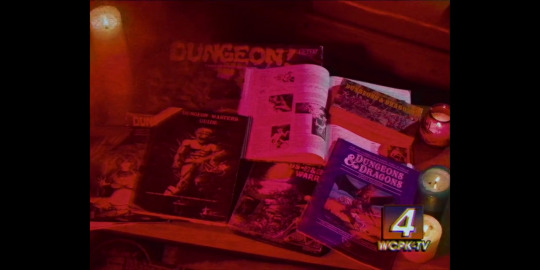
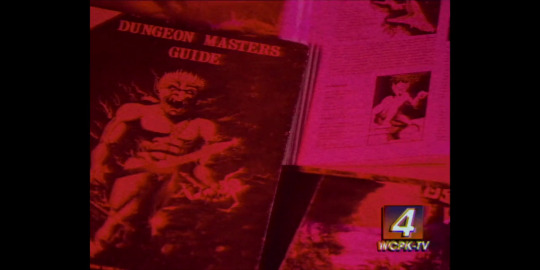
The narrator says, “Some believe a rise in Satanism is to blame.” Blame for what? Blame for the mysterious happenings in the heartland / Hawkins in particular.
Now, as you said it’s funny that the focus is on D&D here when it comes to “rise in Satanism”. The 80s was full of “Satanic Panic” (like rock and roll and punk and horror films and all that) as much as it was about the Soviet Union and the Cold War. It was sometimes tied hand in hand. D&D was considered “Satan’s game” back in the day, much how I guess it’s seen in today’s time that video games with gun violence encourage people kids to use guns. D&D was thought to be the game occults, Satanists, and witches used to recruit kids into their cults. The obsession with these role-played characters was often mislinked to the role players’ deaths, in particular, the story of James Dallas Egbert III in 1979. Long story short, Egbert was a 16-year-old super genius, but he had a lot of stress from school and his parents as part of the prodigy circuit, he wasn’t very popular, and he coped by diving into drugs and D&D. When he disappeared, D&D was to blame, but there was also information about his drug use and his struggle with coming to terms with and hiding his homosexuality. Yup, Dallas was gay.
Talk about Egbert’s drug use and sexuality didn’t float for his parents so the detective, William Dear, (he later wrote a book about it all) turned media attention toward D&D (for the sake of privacy) but the media ran with that blamed Egbert’s disappearance on delusion thanks to LARPing via D&D. Egbert was then thought to have been sacrificed in a Satanic ritual as D&D has in the DM guide (paraphrasing a bit here but you get the point) and basically, D&D was hailed as the evil Satanic game in the media. There’s more to the story of course but I’ll stop there for the sake of keeping to what dots we want to connect here about D&D, Satanism, the UD/MF, and Byler. (Which is such an odd sentence but anyway, let’s move on.)
You know what else is deemed satanic, especially in the 80s? Homosexuality. And if the Upside Down / Mind Flayer represents homosexuality and/or at least internalized homophobia, and the Upside Down is the Satanic presence in Hawkins that is to blame for the conspiracies and evil in the town, then the connection of bringing up D&D, thought to be a game for Satanists, when referencing what is to blame for the evil in Hawkins makes sense. But we know that D&D is also the metaphor used for Mike and Will’s relationship. A gay relationship that would have been seen as satanic just as much as D&D was in their time. So Satanism is to blame, Satanism tied to D&D, D&D being tied to Mike and Will’s shifting relationship, a relationship that, if it was only friendship, would not be considered evil.
“Some believe a rise in Satanism is to blame,” can then be turned into, “Some believe a rise in D&D is to blame.” Knowing that the events of the UD/MF are based off the campaign the Party is playing, we can then substitute D&D for the MF as so: “Some believe a rise in the Mind Flayer’s presence is to blame.” Also knowing that D&D is the show’s metaphor for Mike and Will’s relationship gives you, “Some believe a rise in homosexuality is to blame.” Homosexuality is akin to Satanism for many at this time, especially in the heartland of America, so it’s an apt substitution even without referencing the Mind Flayer. Thing is, what is a “rise in homosexuality” anyway? And that brings me back to your point about Mike and Will coming to terms with their feelings.
The part of the Mind Flayer that was in Will still exists in this dimension and that is what they fight off in ST3. If the Mind Flayer represents puberty and growing up, that also includes coming to grips with one’s sexuality and facing both internalized homophobia and homosexuality itself. I’ll note that Will knows the Mind Flayer is back after he’s just finished destroying his childhood safe space and has to come to grips with liking Mike and Mike (in his mind) not liking him back. He knows the terrors of being gay and the internalized hatred of it is back, he has that connection to it because it is his darkness, the part of the Mind Flayer in him that stayed, the part of his thoughts filled with love for Mike and self-hatred for feeling that way, has come to terrorize Hawkins again.
The Mind Flayer is defeated by happy memories, by comfort, by love: the opposite of the darkness that it is. The opposite of hatred is love after all! That being said, it also means that the Party as a whole has bonded again through love themselves (as we see when they finally reunite just in time for the final battle). Mike and Will though have a schism that is tied to the Mind Flayer as much as they bonded through love against the Mind Flayer in ST2. In those three months after Starcourt, we learn that this split is no longer (the Mind Flayer is defeated after all), Mike and Will have made up, and D&D is a focus between them again. Not to be cheesy but..love wins, my dudes. Anyway, we have here D&D the Satanist game, the game that got popular media attention because a closeted gay teenage prodigy from Ohio played it (might I add that the book Dear wrote about that whole case came out in 1984), the game that is a marker of Will and Mike’s relationship. You can see where this is going.
Back to “rise in homosexuality.” It’s not so much a rise in homosexuality (though on the surface people still think of it as a fad) as much as it is a rise in acknowledging it, in coming to terms with homosexuality and defeating the self hatred, ie. the Mind Flayer.
Now real quickly, the Mind Flayer is an enemy monster in D&D, it’s not unique to Stranger Things. It’s also called an Illithid and these are psionic creatures that feast on their enemies’ brains. A lot of what the Mind Flayer does in ST3 is similar to this thing called ceremorphosis (basically what the MF did when it took over the Flayed in ST3, as in taking over their brains and their mannerisms like a parasite does to a host body). In ST, we see that played out in a more literal sense of being flayed with the Meat Flayer (as I call it on occasion). Now the thing about the Mind Flayer is that it’s a physical monster but it is also a representation of the spread of ideas (it’s a parasite in the brain and that’s essentially what ideas are, or as Dawkins puts it, a meme). The idea in this case is homophobia, the self hatred in Will that spread to an outward hatred that then comes after the Party and in particular El. Why El? We could say it’s because she is the one in the way of Will’s affections but also, she is the one that Mike (who has been proven able to pull Will out from the Mind Flayer’s influence, out of the internalized self hatred) has been using to avoid coming to terms with his own sexuality.
El is a barrier for Mike. El, who has powers and the ability to destroy the monsters, is a shield for more than just defeating the physical terrors of the Upside Down, she also shields Mike from facing his truth, the metaphysical terrors of the Upside Down. When her powers are taken away by the monster itself, by the spread of this idea, Mike’s shield is gone. El survives, she still manages to turn Billy for him to make the sacrifice play because she has the happy memories and the love, but the shield is broken. It’s broken the entire time the Party confronts the Mind Flayer. Also noting that Mike is the one who tore off the giant piece of the Meat Flayer that was still on El’s leg back in the cabin before they made it to the supermarket. He is the one who tries to save the shield from the bite / infection of the idea and tries to salvage their relationship too in the supermarket, but El still has the Meat/Mind Flayer in her and taking that out in Starcourt destroys the shield (her powers and in a way, Mike’s attraction to her--I mean, she was like a real life Will the Wise if we get down to it). Mike then is face to face with his biggest fear: growing up in full--not what he thinks it should be as he parroted to Will in that argument, but what it is for him--which means accepting his sexuality. By three months in, it seems he’s done that, or is at least open to the prospect if standing in front of an open closet door while not responding to a kiss from his supposed female love interest shortly after flirting with his male best friend is anything to go off of.
tl;dr D&D is a metaphor for Will and Mike’s relationship, but D&D was also seen as a Satanic game and homosexuality was considered a disease from Satan. The Mind Flayer represents homosexuality/internalized homophobia and is a native monster to D&D, tying the Satanic references even closer. The final piece is that D&D is used throughout ST to represent/reference Mike and Will’s relationship. D&D which is being referenced as satanic in that TV spot, something Mike and Will’s relationship would be seen as if it wasn’t just friendship, meaning it’s romantic or at least something they want to be romantic.
even shorter tl;dr Mike and Will are gay and the world is scared of their love for each other as much as they are scared of their love, too.
#byler#byeler#meta#st meta#wow i kinda went in on this#but you had my ideas RUNNING ANON#my god thank u for bringing it up#7s anon#anon#yams answers
204 notes
·
View notes
Text

d&d update: there's girls and they're winning!
#d&d#dnd#ttrpg#d&d campaign: heartland#oc: erol#oc: maihr @artharakka#what if we kissed in a curse realm we’re stuck in😳#what then!!#they had just played truth and dare (essential) and erol was like ough u were taking it so srs and being poetic and shit that was real cool#and i wish we would've goofed around less with dare kissing etc. BTW do you wanna kiss more rightnow
195 notes
·
View notes
Text

happier times
#i HAVE so many feelings about our dnd campaign hdhrhrhrhr#d&d heartland#oc verna#+ her old mercenary tutor caleb#dnd#(my tags are a mess sdfggf)
7 notes
·
View notes
Photo

DISSENT MAGAZINE
Over the course of the presidential primary campaign, we’ve seen a similar scene play out over and over: candidates giving regionally specific performances meant to convey their relatability and authenticity. This May, for example, at a Wisconsin town hall event televised on Fox News, presidential candidate Amy Klobuchar of Minnesota attempted to woo her overwhelmingly white audience by underscoring her sensible Midwestern roots. Dubbing herself “Heartland Amy” (the subtitle of her campaign book is A Memoir from the Heartland), she peddled what she termed “heartland economics”—policies that supposedly reflect the concerns of regular voters, as well as their innate conservatism. Klobuchar has not only embraced the prairie put-on the media has come to expect from certain candidates; she’s also foregrounded her (white) Midwestern identity. Because she hails from the nation’s geographic middle, Klobuchar claims, she and her campaign possess unique insight into the needs and desires of “average” American voters. “I am from the middle of the country,” Klobuchar proudly declared in her closing remarks during last week’s Democratic debate. “And I believe, if we’re going to get things done, that we have to have someone leading the ticket with grit, someone who’s going to not just change the policies, but change the tone in the country, and someone who believes in America and believes it from their heart because of where they came from.” Fellow Democratic contenders Pete Buttigieg of Indiana and Tim Ryan of Ohio have echoed some version of Klobuchar’s appeal to Middle-American decency.
Former Senator Claire McCaskill, a Missouri Democrat who was hired as an analyst for MSNBC after losing to Republican Josh Hawley in 2018, employs a similar style to admonish her party’s insurgent left flank. After the July debates, McCaskill claimed that “free stuff”—Medicare for All, free college, a Green New Deal—“does not play well in the Midwest.” (McCaskill, it’s worth noting, lost her election even as Missourians voted for ballot initiatives that rejected the state’s so-called right-to-work laws, legalized medical marijuana, and raised the minimum wage.)
Although you wouldn’t know it from Democrats who conflate the geographic and political center, the Midwest has a left-populist tradition that stretches back to the mid-nineteenth century, when small farmers embraced a politics critical of corporate capitalism. Even today, the region is not somehow uniquely opposed to mass redistribution. Programs like Medicare and Social Security are as popular in Ohio and Iowa as they are anywhere. And, of course, the corporations and big agriculture that make up so much of the Midwest’s commercial fabric consume a disproportionate share of government subsidies.
The imaginary Midwest of media stereotype—a place of bucolic cornfields and good-sense politics—also obscures its nonwhite past and present. From its legal origins in the Northwest Ordinance, the region has always been multiracial: American Indian, African, and European. It became even more racially and ethnically diverse in the age of railroads, urbanization, and machine-based manufacturing. With the movement of global capital and its rapacious demand for cheaper labor, populations from Latin America, Africa, and South and East Asia have remade—and continue to remake—the demography of not only the region’s major cities but also its restrictive suburbs and former sundown towns. Descriptions of an authentic white Middle America, by contrast, launder the processes of ethnic cleansing, xenophobia, racial segregation, and violence that created and sustained the heartland. Midwestern states that are overwhelmingly non-Hispanic white, like Iowa (at 85 percent), didn’t end up that way by historical accident. Neither is it an accident that black Iowans are incarcerated at eleven times the rate of white Iowans, or that an explicitly white-supremacist congressman, Steve King, has found consistent electoral success in the state.
But the fact that the Midwest is not a political or racial monolith is beside the point. McCaskill’s “free stuff” is not meant to draw empirical scrutiny; it is meant to summon fears of poor and working-class people of color. Likewise, Klobuchar’s “heartland” is not intended to foster a critical debate about geographic inequality; rather, it seeks to evoke whiteness. As historian Toby Higbie puts it, “what people usually mean by the heartland is the Midwest without Detroit, Chicago, St. Louis, and the kinds of people who live in those big cities, without Native American reservations, and without rural poverty.” This is the same exclusionary Midwest that New York Times reporter Jonathan Weisman conjured when he tweeted: “Saying Rashida Tlaib (D–Detroit) and Ilhan Omar (D–Minneapolis) are from the Midwest is like saying Lloyd Doggett (D–Austin) is from Texas or John Lewis (D–Atlanta) is from the Deep South.”
The trope of an ostensibly racially neutral and politically reasonable “Middle American heartland” is a historical fiction, juxtaposed with a purportedly backward (and multiracial) South. The notion of an American “center” was popularized in the nineteenth century by editors and politicos and adopted by Ohioans, Hoosiers, Illinoisans, and Iowans who, through the restriction and banishment of black people, wished to navigate a “middle way” between slavery and racial liberalization. Its modern iteration reflects conservative political strategies and elite discourses of the 1960s. Whitewashing the region’s radical history since the abolitionist movement, liberal journalists made sense of white hostility toward civil rights and the counterculture by flattening much of the U.S. interior and branding it as hopelessly reactionary. At the same time, right-wing politicians exploited the grievance politics of the white petite bourgeoisie, beginning with Alabama segregationist George Wallace’s 1964 presidential campaign (which performed well in Wisconsin and Indiana). This connection of white middle-class victimhood with regional imagery culminated in the resounding electoral success of Richard Nixon’s more implicit “Silent Majority” coalition.
In the wake of these developments came the rise of the “Reagan Democrat” in the Rust Belt. Ronald Reagan couched his anti-statist message and vows to dismantle the New Deal state in racist terms, lauding the industrious white worker (who had benefited from the racially exclusionary New Deal) while denigrating the fictive “welfare queen” and her accomplices. That political formation continued into the twenty-first century, as political scientist Katherine Cramer showed in her book The Politics of Resentment, which examines how former Wisconsin governor Scott Walker deployed a racist, anti-intellectual, and anti-statist ideology to remake his home state according to the designs of the Koch Brothers and American Legislative Exchange Council.
By contrast, Donald Trump has promised to protect (white) Midwesterners and guarantee their livelihoods with decisive federal action—whether through protectionist trade policies, job creation, generous healthcare benefits, or otherwise. However empty those promises were, they resonated with Michigan and Wisconsin voters—many of whom had cast their ballots (twice) for Obama—and helped topple the Democrats’ “firewall” in the Upper Midwest. Trump won the heartland in part by promising “free stuff.” (His actual economic policies, of course, have followed recent Republican Party tradition.)
(Continue Reading)
47 notes
·
View notes
Photo

Irresistible. D: John Stewart. (2020). Irresistible is a modestly funny political fable that’s more polemical than I’d like but less than I’d expect. It’s worth seeing. That’s almost as much as I can tell you. The plot hinges on the kind of ending where even saying “spoiler alert” is a spoiler. It starts with a town hall meeting shortly after the 2016 election, in “Heartland, America” (as a subtitle tells us). Jack Hastings (Chris Cooper channelling Gary) a local farmer and former Marine, eloquently inveighs against an anti-immigrant resolution. His speech is caught on youtube (in a quick cut that’s one of the too-few splashes of visual wit) and comes to the attention of Gary Zimmer (Steve Carell) a former Clinton campaign manager looking for a comeback. Zimmer moves to what is actually Deerluken, Wisconsin, an economically distressed politically conservative small town in order to convince Jack Hastings to run for Mayor so he can turn it into a national story. This attracts a rival operative Faith Brewster (Rose Byrne, stealing every scene she’s in) who offers her services to the incumbent Mayor. Soon, the tiny town is a center of political action and all the pitfalls thereof – shady PACs, trips to court big Washington donors and hilariously over-the-top TV ads. Every once in awhile somebody says something to the effect that this is what is killing democracy but mostly Stewart lets the story tell itself.
The biggest pitfall is that the director gives so much more heft to Carell’s story than Byrne’s. She has such a ball playing a diffident-narcissist that it’s disappointing that her campaign is only seen through his POV. (Topher Grace and Natasha Lyonne, as Carell’s staffers are similarly wasted.) And Carell plays Zimmer as a fundamentally decent but tone-deaf pol, rather than the raging egomaniac the role calls for (I kept mentally recasting Albert Brooks in the part). And I wish Stewart had done more with the “news as showbiz as news” mediaverse and how their collusion with campaign manipulators is the other side of this story. Mostly though, it’s that for all his acidity, he never seems to convey real rage. That’s partly because of the *SPOILER!* and partly because he’s reluctant to be seen as favoring one political bent over another in a story about flaws in the system, and maybe a little bit because he wants to be a nice guy. But compared to someone like Veep’s Armando Iannucci (who I bet is a real piece of work) he’s Frank Capra.
2 notes
·
View notes
Photo
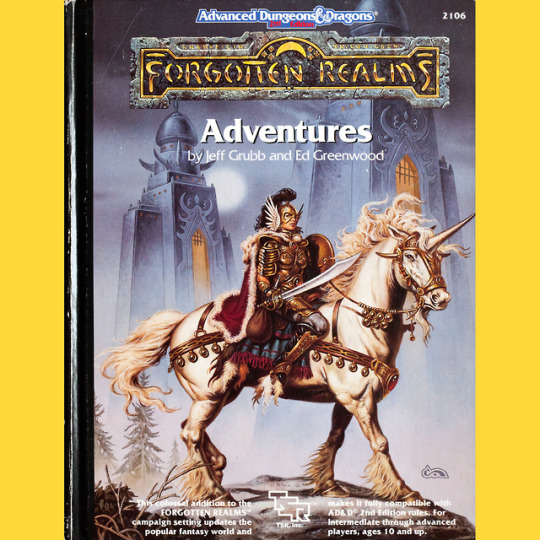


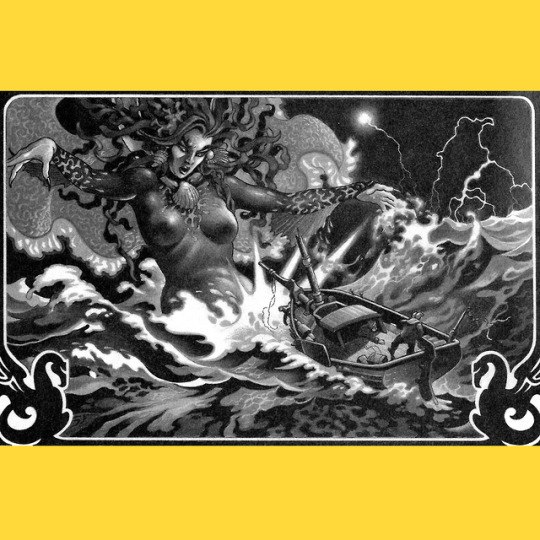
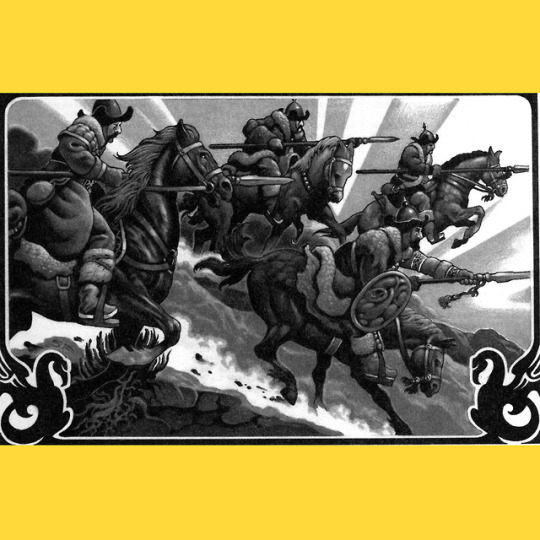

This is the third Adventures hardcover, following Dragonlance (1987) and Greyhawk (1988), and first non-rulebook hardcover for AD&D second edition. Rather than a stand-alone re-introduction to the Realms, it is an expansion of the 1987 Campaign Set, filling in the Heartlands, one of the regions the ‘87 box left blank for homebrew DMs. There was also the paradigm shift of the Time of Troubles to contend with (the transition from 1E to 2E played out in dramatic narrative fashion across the three Avatar novels and the modules Shadowdale, Tantras and Waterdeep). Adventures has details on wild magic, the new gods, gunpowder and the other stupidity the event introduced.
This was the first FR book I owned and I think I enjoy it so much because it offered a small slice of a larger world in a moment of transition. Such moments are always full of excitement. There are tantalizing ideas – I always loved that beholder cult leader, for instance, and implications he personified. The confusion of having a dead god of death was also intriguing – and also a shame, as his priest’s outfit is obviously the coolest in the book.
A lot of this mystique is down to – drum roll please – the illustrations by Stephen Fabian. Yep, that Stephen Fabian, who pretty much single-handedly holds the Ravenloft campaign setting together. I love his work (which is distinctly un-Ravenloft here, I might add). It looks unique and exciting and strange and imbues the world with atmosphere. Forgotten Realms has never looked better, before or since.
Join us on Patreon!
#RPG#TTRPG#Tabletop RPG#Roleplaying Game#D&D#dungeons & dragons#Ed Greenwood#Forgotten Realms#TSR#2E#Forgotten Realms Adventures#Stephen Fabian#Avatar#Time of Troubles
63 notes
·
View notes
Text
The Man in the High Castle - Character Bios from Amazon’s X-ray feature - requested by anonymous
John Smith
John Smith was born in Manhattan in 1917, the second son of a prosperous Wall Street Banker. In many ways, John's early life looked picture perfect. Any hint of superiority, however, was tempered by his father, who instilled a deep sense of civic duty and propriety in his sons. The boys were four years apart in age. John looked up to older brother Chris, a star athlete and an A-student, following in suit. In 1927, when John was 11, Chris collapsed and was soon wheelchair bound. In March, 1929, The Wall Street Crash struck, and overnight American banking institutions folded. John's father was financially ruined and promptly took his own life. And so, at 13 years old, John Smith swore to himself that he would never allow himself to break. Even when his beloved brother passed away, two years later, John Smith pressed on. Despite witnessing a New York City that had become decrepit and corrupt, and a failing America that had been gutted once more by the 1933 assassination of President Franklin D. Roosevelt, John was still determined and still a patriot. He earned a degree at Princeton, he joined the New York Mayor's office, implementing programs to get America back to work, and, when war loomed, he signed up for officer training at West Point. where he proved a natural solder and tactician. Graduating to a post within the US Signal Corps. By 1942. John Smith was a 1st Lieutenant. In 1943, he was promoted to Captain and re-deployed to the Pentagon to advise all branches of the military on intelligence gathering. During this time, he met and married Helen McCrae, the beautiful, accomplished daughter of two Harvard academics. Helen became pregnant with their first child in July, 1945. Just a few months later, the American government fell to the New Reich. Smith saw surrender as the right thing to do. America had lost. Nothing in the US arsenal could compete with Nazi nuclear power. So, John Smith assimilated into the interim government, in sincere hope he could lessen the brutality of Nazi retaliation against rebel uprisings. He could save American lives. He could keep those he loved safe. Nazism is survival.
Wyatt Price
Wyatt Price is the alias of an Irishman who fled Nazi Europe in 1944 to seek refuge in unconquered North America. Though Ireland had remained neutral at the outset of The War, large numbers of Irishmen had been called to fight and more took to the front after nearly 400000 British soldiers were killed or otherwise defeated at the beachhead in Dunkirk, France in 1940. In September of that year, British Prime Minister Winston Churchill was killed in a German air raid, and the war raged on. Young Liam had been away from home for a year, fighting for the British Army. In January, 1942, the British Government fell to the Reich. England was occupied, but fierce resistance continued in Wales and Scotland for two more years. In 1944, the remnants of the British Isles were finally conquered. When Ireland capitulated to German rule, Irish men and women left the mainland In droves, pushing off the coasts by night, bound for the Americas. Young Liam was among those who fled. In America, Liam became Wyatt Price. He had seen his fair share of horrors back in Europe. He had lost almost his entire family, and wanted to start anew. But war was encroaching on North America as well, and in 1945 Germany took the continent, dropping the A-Bomb on the capital. For two years, Wyatt fought in the Rebel American War. By 1947, badly beaten, and starved of resources, the resistance was forced underground. Wyatt's surviving network spread out. Some military comrades stayed on the East Coast in the Greater Nazi Reich, while others dispersed to the Neutral Zone in the former American heartland, where 'freedom' became simply another word for ‘lawlessness’. It was in this wild, neutral territory that Wyatt established himself. He became known as a shrewd, resourceful fixer. He was depended on by many, but trusted no one. He never spoke of the past, he never told anyone his real name. He shrouded himself in secrecy and misinformation. He could smuggle anything, obtain official-looking documents; it was impossible to know whose side he was on. And Wyatt liked it that way. It was the best way to stay alive while doing so-called dirty work. He had long abandoned the fight for liberty and justice in this world. He resigned himself to mating for justice in the next one.
Juliana Crain
Juliana has a tendency for deep introspection and even depression - a result of her father's death, which cast a shadow over her life. She was 10 and her sister Trudy nearly 3 when the A bomb fell on Washington, D.C. Within days, the American government had surrendered. Intense resistance followed and life became hard for white Californians. The Japanese occupation was brutally enforced. White people were denied ownership of major businesses. Anyone not bowing to a Japanese citizen in the street was shot dead. By the time Juliana completed high school, the San Francisco where she was born was unrecognizable. But, despite the horrors, many things about Japanese culture fascinated Juliana - its orderliness, beauty, food, and subtle philosophy. She persuaded a Japanese Dojo to take her on as an Aikido student and found she had a talent for the martial art and its focus on energy, poise, and balance. Nevertheless, the atmosphere of oppression and obedience in the JPS was draining. Over the years Juliana's depressions deepened until, one day, she stepped in front of a bus, determined to set herself free. Death, however, was not In store for Juliana Crain. Instead, she found herself injured and in the arms of a young passerby, Frank Fink. Over the course of her recovery, the two established a strong bond that became a deep love. But as she began to settle into a life with Frank, a restless searching began to rise once more within her. On the night she witnessed her sister Trudy's execution at the hands of the Kempeitai, Juliana Crain stepped once more into the unknown, this time to answer the call of a transcendent force, somewhat akin to destiny.
Takeshi Kido
Takeshi Kido was born in 1917 in the town of Koriyama, Japan. The son of a tenant farmer, Kido was the fourth of eight children. Theirs was a hard life with no prospects for improvement, of backbreaking work, and unpredictable, often swift, death. In 1930, a 13-year-old Kido took the intelligence test given to 15-year-old prospective students for the Japanese Intelligence Service and scored off the charts. In 1932, he ran away from home to join the Army and was recruited into the Kempeitai — the highly respected Japanese military police and intelligence force. Kido excelled not just because of intellect but because of his strength of will and unyielding sense of patriotic duty. His drive to succeed was unmatched. Orders that might give others pause had no effect on the young officer. Kid0 was serving in Manchuria when the Japanese army invades deeper into China in 1937. The infamous Rape of Nanking occurred during this campaign, and Kido was confronted with a level of brutality he had never before imagined. Such horrors left an indelible mark on him. In the intervening years, Kido became a seasoned officer, serving honorably across many bloody campaigns. He witnessed many horrors including the Rape of Nanking and, later, the carnage of the Solomon Islands offensives, which claimed the lives of many American and Japanese troops. Having risen In the Japanese societal hierarchy, Kido took a wife in 1950. He would father two children with his bride, but the family was divided by Kido's duty to the Empire. Kido took up a post in the Japanese Pacific States of America in 1952. In 1957, he was promoted to Chief Inspector of the Kempeitai, one of the most senior positions in the JPS, and by 1962, the year he shot and killed a young rebel by the name of Trudy Walker, Kido had spent five years crushing American resistance firmly under his boot and almost seventeen years away from mainland Japan, a place he would never again call home.
Joe Blake
Joe believed he was born in Brooklyn in 1938, the single child of a single, German mother who claimed Joe's German father abandoned them before he was born. When the A-bomb dropped on Washington. D.C. the Nazis assumed power, and, by 1950, the American Reich was firmly established. But young Joe Blake was never totally certain who he was or what he wanted to be. He still wanted to hide his mother's German-ness. Most of all, he never felt worthy of an absent father's love. This confusion and shame came out in a rebellious streak. Joe stole a car at age 15 and, at the police station, he heard his mother tell a desk sergeant about what an important man his father was, back in Berlin. Later that day, he received a visitor - a GNR colonel named John Smith, who offered him a ride home. Joe's run In with Smith helped him turn a corner. He got an apprenticeship in construction, did a year of mandatory military service and signed up to the Corps of Engineers. He was a charming young than who kept intimacies at a distance. He did honest work for an honest Mark. His mother died of Septicemia when he was 21 years old, and Joe buried his grief along with her. That muted sadness turned into a silent rage at their poverty, at their abandonment by his father, a man he longed to have known. Two years later, John Smith - now Obergruppenführer - re-appeared In Joe's life. Smith had a Job for him if he was willing to commit. Joe didn't care about the Reich or duty to his country but Smith fascinated Joe and so did the prospect of finding out more about his elusive father. Joe agreed to Smith's terms for he had nothing to lose.
Nicole Dörmer
Nicole was born to a pretty, young ward of the Lebensborn nursery where every aspect of her upbringing was designed to indoctrinate her and her Lebensborn fellows. One of Nicole’s earliest memories was a visit by Himmler to the orphanage. Nicole was only four and already a starling beauty. She as chosen to hand Himmler a bouquet and sing a patriotic song. Himmler raised her in his arms and kissed her cheeks, telling Nicole that he was her father. Then, in the spring of 1944, Otto Dörmer, Nicole’s real, biological father arrived. Young Nicole was taken to Dörmer’s grand family home in Potsdam, where she had the run of the mansion. By 1944, the Lebensborn program was being phased out by the Reich; thusly, its products were becoming more and more valuable. Private schools vied for the privilege of taking Nicole and her comrades. With their privileged status, the Lebensborn children often found they could get away with behaviors or attitudes that would have placed other citizens in danger. They illicitly collected Jazz, read banned books, and made mildly critical observations of about the state. But despite this rebelliousness, they were proud believers in the clear superiority of the Nazi regime. Nicole traveled the world before college. She dined at all the fashionable restaurants and attended all the best parties, plays and film galas. Fascinated by the media as an instrument of State Control, she enrolled at the Brandenburg Studios Propaganda Arts course and dropped out after four semesters, bored by the conventionalism. She experimented with LSD and had liaisons with both men and women in an attempt to free herself from conventional norms. In 1960, at age 21, Nicole was expected to find a husband, but she wanted a career, she wanted to be noticed, and she wanted to make a difference. Later that year, she was arrested under suspicion of publishing a seditious pamphlet. Upon release, she was cowed but far from broken. It was a wake-up call that she was not immune from harm and that she shouldn't be foolishly outspoken. But in other ways, it made her even more determined to challenge the received wisdom of the "fossils" in power.
Robert Childan
Robert Childan was born in San Francisco in 1919. He was an only child and the apple of his mother's eye. Robert's father was a stern and emotionally closed man who ran a kitchen and housewares business. Robert was 10 when the Great Depression hit and his father's enterprise went bust. The family moved into a small downtown San Francisco apartment and lived in the midst of Mrs. Childan's sprawling book collection. After college, Robert got a junior curator position at the San Francisco Museum of Art and managed to avoid going to war after a mild cardiac arrhythmia was detected during his medical examination. In 1942, Robert's father died, and, in 1945, his mother passed away too, just before the Germans dropped the A-bomb. As Japan began its occupation of San Francisco, Robert realized he'd need to adapt quickly or he'd likely wind up dead or arrested. His resourcefulness ultimately led him to the idea of starting a bookstore using his mother's collection as initial inventory. The white-collar jobs Robert was suited for were not open to him in the San Francisco of the JPS, but Japanese hunger for Americana and curiosity about American literature was taking hold all over the city. He knew he could exploit this. Robert began to buy up old heirlooms and American antiques. Very soon sales of American object's d'art outstripped book sales. His livelihood depended upon a growing Japanese client base. Over the years, he grew to admire the distinctive and aloof cultural superiority of his patrons and envied their grace and beauty. He was becoming part of a new class of 'Nippophile' aesthetes, an inevitable side effect of Japan's cultural imperialism in California. But, deep down, Robert resented those he seemed to adore.
Edward McCarthy
Edward was born in Oakland in 1934 to proud second-generation Irish Americans. His father had grown up in the Bay area, inheriting a small metalworking factory from Ed's grandfather. After his family moved into a modest townhouse near the factory, Ed met and quickly befriended his neighbor, Frank Frink. The war with Japan began in April 1941 and many factory workers signed up, leaving wives and daughters to keep factory production lines moving. Ed spent a lot of time there; he loved the smell, sound and vitality. In July 1944, when Ed and Frank were 10 years old, the war with Japan arrived on America's doorstep. Planes swooped down on San Francisco to unleash their bombs. The family survived the raid, but later that year, the Japanese dropped Chlorine explosives on the city, leaving Ed poisoned and on the edge of dying. Ed's mother perished in the attack. At the hospital, Ed spent many hours alone, in pain and in fear. With this isolation and suffering came an extraordinary strength of resilience to endure. And though he did not recognize it as a boy, he felt a deep love towards Frank who came to visit him every day for months. It was a bond of affection that would be a guiding light for the rest of his life. By 1946, Ed would need this kinship for survival. The Bomb had been dropped on Washington, the factory had been taken over by the Japanese, and Ed's father had been dragged into the factory courtyard, forced to his knees and shot in front of all the workers; Ed went to live with his grandparents. Churches closed, St. Patrick's Day was banned, and San Francisco filled with waifs and strays fleeing the Nazis in the East and migrant workers from the Japanese Empire in Asia. But Ed never hated the Japanese; he hated war and violence and brutality. Ed's deepest reaction to loss was always to love. This was his gift.
Frank Frink
Frank was born in 1934, his older sister had been born two years earlier. After the Japanese attacked Pearl Harbor in April, 1941, Frank and his sister went to live with their grandmother. They worked jobs after school, cooked, cleaned and helped to pay the bills with what meager funds they could scrape together. Their father died on the front lines in 1943, fighting the Japanese, and five years later, their mother passed away too. It was around this time that Frank's best friend's father was shot dead in the courtyard of his metalworking factory by Japanese occupiers who had come to take over. Frank and his friend, Ed, were bonded in unspoken shared pain. At age 16, Frank got a job at the factory where he helped craft handguns for the Japanese market. Frank's first passion had always been art; drawing and painting had been a way for his mind to escape. Unfortunately, there was little appreciation or legitimate outlet for Frank's gifts. One morning, on the way to the factory, Frank was shocked to see a beautiful young woman purposely step into the street in front of an oncoming bus. It was Juliana Crain. The two moved in together shortly after Juliana got out of hospital and began a life together. They were happy, for a time. But, as much as Frank and Juliana loved each other, a series of tragedies and shocking experiences would set them on very different paths. Frank supported Juliana as she committed herself to a purpose he couldn't fully understand, making the best of a bad situation, until finally, they parted. The young artist also fell victim to the encroachment of racial purity laws on the JPS and Frank Frink, once passive and resigned, found himself consumed by hatred for the leader of the Kempeitai who cruelly and capriciously enforced the laws of the Reich.
Helen Smith
Helen was born in Boston in January 1922 to parents who were academics. Helen was being raised to think for herself and challenge conventional wisdom. After the Great Depression hit in 1929, she witnessed deep poverty and hunger in addition to the birth of a fierce political environment, which helped incite the assassination of President Roosevelt in 1933. With Stalin's rise in the Soviet Union and Hitler's imposition of Fascism in Germany, it seemed to young Helen that America was itself on the brink of totalitarian take over. And why not? If it got America working again. In 1940, Helen went to study at the prestigious NYU School of Commerce, Accounts and Finance and, in 1941, after the Japanese attacked Pearl Harbor, she dropped out to volunteer as a secretary in the New York War Office. Then, in June, 1943, Helen's life changed again. A young Captain, named John Smith, came to City Hall to set up an intelligence bureau. He and Helen became friends, then lovers. A year later, they were married in a modest ceremony, just before John left to fight in the war raging in the Pacific. Every day, Helen dreaded bad news from the front. But in 1945, Helen discovered she was pregnant; this good news was accompanied by word that her husband was to take up a permanent post at the Pentagon. The couple shipped their belongings to Washington, D.C. and drove down from New York together, stopping for the night, just outside of the city. That night, the Nazis dropped the Heisenberg device on Washington; overnight, the world changed. John Smith was a profoundly moral man who shared Helen's belief in a benevolent and supportive community. It seemed the only way towards that future would be to fully capitulate to Reich, avoiding potential nuclear annihilation. And so began Helen's embrace of the Nazi way of life. She wanted a safe world in which to raise her son, and eventually her daughters. Despite her parents' executions in 1949 at the hands of the GNR, she had made peace with the realities of Fascist America, the means and methods by which it was achieved, and was grateful for the benefits it brought her - if only for a time.
Nobusuke Tagomi
Tagomi was born in Tokyo in 1887, in the Meiji era - when Japan restored the Emperor and rapidly began to militarize and modernize. Tagomi's family was Samurai caste from the ruling elite, with close ties to the royal family. He and his younger brothers were raised from the cradle to understand that their life would be in service to the Japanese State. At age 11, Tagomi was sent away to Navy Cadet School. There he was schooled in English, French and German, served in the Japanese fleet for several years, and became a junior Naval Attaché. He soon realized his aptitude for diplomacy and negotiation was better suited to work in the Trade department and in 1916, he left the Navy for a position at the Japanese Trade Mission. Years later, in 1933, Tagomi met and wed the daughter of another elite Samurai family from Yokohama. He was 38 years old at the time. Their son, Yoshi, was born the following year, and, in many ways, this era was the happiest of Tagomi's life. Professionally, he continued to rise in stature, but clouds were gathering. Fascism in Germany, coupled with the emerging political influence of Major General Hideki Tojo, was an increasing threat. In 1939, the war in Europe began, and in 1940, Japan allied with Hitler. Tagomi became crucial to the war effort as Japan was challenged by lack of oil in its territories. He went on a series of trade missions to California to negotiate oil imports and was successful in his negotiations. The irony: US oil would fuel the conflicts that eventually defeated her. Despite much success, death was slowly closing in on Tagomi's loved ones. His brothers perished in the Pacific at the start of the war. After the family moved to San Francisco in 1947, so Tagomi could help set up a colonial administration, Yoshi joined the Japanese Imperial Army and died serving in Manchuria in 1952. Tagomi's wife returned to Tokyo, heartbroken, and succumbed to Pneumonia in 1953. Tagomi went into himself, seeking solace in meditation. There must be some purpose to this life. Some reason to the world. Could he find it, alone in San Francisco?
#the man in the high castle#tmithc#john smith#Helen Smith#Juliana Crain#joe blake#frank frink#wyatt price#inspector kido#nobusuke tagomi#nicole dörmer#ed mccarthy#robert childan
85 notes
·
View notes